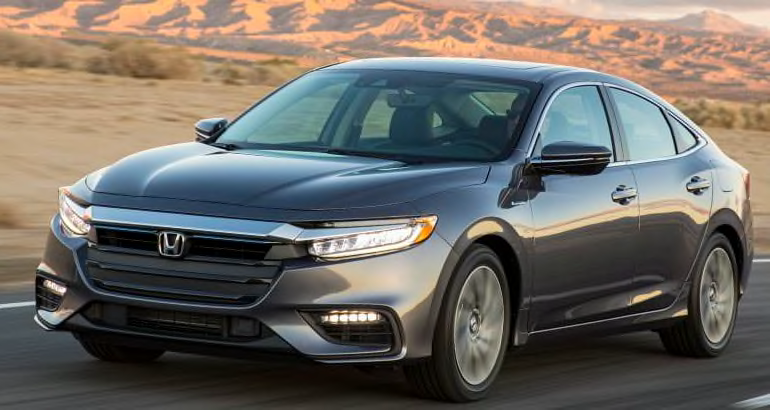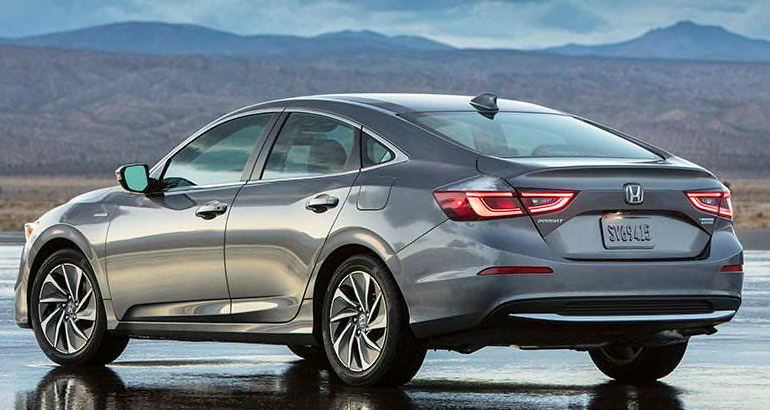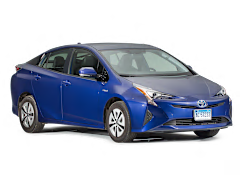The new 2019 Honda Insight hybrid was designed as a conventional-looking sedan that should appeal to a wider audience than its first- and second-generation cousins that had polarizing styling, forcing buyers to make trade-offs in the name of fuel efficiency.
Honda says the new Insight has an EPA fuel economy rating of 55 mpg in the city, showing consumers that "the efficiency of a hybrid car doesn't mean sacrificing style, refinement or performance," says Henio Arcangeli, Jr., senior vice president of American Honda Motor Co., Inc.
The new Insight will sit above the Civic and below the Accord in Honda's model lineup. How the public will respond to the Insight will be interesting. With the demise of the Civic Hybrid and the arrival of the Clarity line of plug-in hybrid, electric, and fuel cell vehicles, Honda has gone all in on sedan-based alternative-fueled models. This comes at a time when SUVs continue to see sales growth, while sedans are on the decline.
2019 Honda Insight
What it competes with: Hyundai Ioniq, Kia Niro, Toyota Prius
What it looks like: A typical four-door sedan from Honda, similar to a baby Honda Accord
Powertrains: 151-hp (combined), 1.5-liter, 4-cylinder engine + electric motor and lithium-ion battery pack; multimode automatic transmission; front-wheel drive
Onsale date: Summer 2018

Outside
The Insight is a good-looking sedan, a 180-degree styling departure from the previous Insights. It has a slightly rising beltline, similar to the Civic's. From the front ¾ view and in profile the car looks as if it could be a four-door liftback, but the new Insight is clearly a traditional sedan with a trunk. Honda stayed very conservative with the 2019 Insight.

Inside
This third-generation Insight has room for five passengers and, according to Honda "premium feature content." The base LX gets cloth seats, heated mirrors, push-button start, and a basic six-speaker audio system with bluetooth capability. Moving up to the EX brings an eight-inch touchscreen, satellite radio, and Smart Entry, which allows drivers to approach the car with the keyfob in their pocket or bag and open the door without taking the fob out.
Leather seats are optional on the LX and EX, but standard on the Touring, which also gets power-adjustable front seats, dual-zone climate control, a power moonroof, and rain-sensing wipers.
The EX and Touring trims feature 60/40-split folding rear seats, which sit above the lithium-ion battery. According to Honda, rear legroom is a "best-in-class" 37.4 inches, and trunk capacity is 15.1 cu.-ft.
What Drives It
The Insight features what Honda calls its two-motor hybrid system: a 1.5-liter engine that works with an electric motor and hybrid battery pack, for a combined 151 horsepower. Honda says in most conditions it will operate on electric power only, using the gasoline engine as a generator to charge the battery pack.
The multimode direct drive setup works with the electric motor operating on a single gear ratio, while the gas engine uses a different ratio for higher-speed driving.
The Insight's basic platform is shared with the Civic, though Honda says a number of modifications have been made to better reflect the "premium" nature of this compact sedan. These include ride quality, cabin quietness, and efficiency improvements. The steering system is an electric one, and like all hybrids the regenerative brakes help recharge the battery when the Insight is slowed.
The Insight gets Honda's push-button gear selector. In our tests of other Hondas, we've found the push-button shifter to be cumbersome and unintuitive to use. However, Honda has built in comprehensive safeguards to prevent the vehicle from an accidental rollaway if drivers fail to put it in Park or if they open the door while in gear.

Safety & Driver-Assist Systems
All versions of the Insight will have the Honda Sensing suite of advanced safety features as standard equipment. This package includes forward-collision warning, automatic emergency braking, lane-departure warning, and lane-keeping assist. But Honda isn't offering a blind-spot warning system as standard, and only offers Honda LaneWatch system on the EX and Touring trims.
Honda LaneWatch displays an image of the right side of the vehicle when the driver activates the right-hand turn signal; the left side of the car doesn't have coverage.
CR's Take
Honda has struggled to find its place in the electrified car market in recent years. But the Insight appears to have some of the necessary features to challenge the Hyundai, Kia, and (especially) Toyota, at least on the mileage front.
The decision to go with a sedan and not a hatchback/liftback is interesting. When we previewed the Insight at the 2018 North American International Auto Show, Facebook commenters indicated that the lack of a hatchback bodystyle was a deal breaker for them.
The push-button gear selector complicates the Insight's controls, and Consumer Reports doesn't believe that the Honda LaneWatch system is as effective as a true blind-spot warning system that covers both sides of the car.
How Accurate Are Fuel Economy Estimates?
How accurate are the gas mileage estimates that come with new cars? On the 'Consumer 101' TV show, Consumer Reports' expert Ryan Pszczolkowski explains how CR confirms the amount of fuel an engine is using—and offers tips for maximizing your mpgs.


















